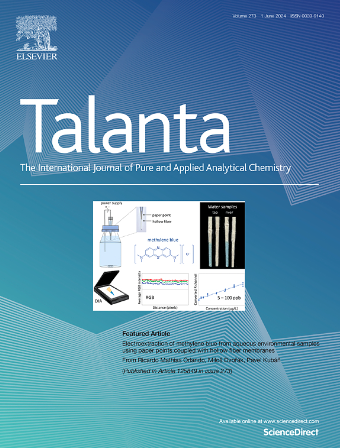Photoelectrochemical biosensors for cardiovascular disease biomarkers: Advances, challenges, and clinical prospects
IF 6.1
1区 化学
Q1 CHEMISTRY, ANALYTICAL
引用次数: 0
Abstract
With the aging of the population and changes in modern lifestyles, the prevalence of cardiovascular diseases (CVDs) continues to rise globally, posing a serious threat to human health. The optimal therapeutic window for treating severe CVDs such as acute myocardial infarction (AMI) is extremely narrow, limiting the treatment outcomes. The emergence of in vitro diagnostic technology has significantly improved the diagnostic compliance rate of AMI and elevated the treatment effects. In recent years, an emerging analytical method, photoelectrochemical (PEC) biosensor, has drawn much attention because of its excellent sensitivity, good stability, and easy operation. Their clinical translation is expected to shorten the screening and diagnosis cycle, extend the therapeutic window, and significantly benefit patients. Despite rapid progress in the past decade, existing reviews mainly focus on general PEC sensing principles or material innovations, while comprehensive analyses of disease-specific biomarker detection and translational challenges remain limited. This review addresses these gaps by systematically summarizing recent advances of PEC biosensors for CVDs biomarker detection, critically comparing detection strategies, and discussing opportunities for clinical application. We also look ahead at the key research needs, including multiplex detection, integration with wearable devices, and real-world validation, thereby offering new perspectives for advancing the practical application of PEC biosensors in CVDs diagnostics.

用于心血管疾病生物标志物的光电化学生物传感器:进展、挑战和临床前景
随着人口老龄化和现代生活方式的改变,全球心血管疾病患病率持续上升,对人类健康构成严重威胁。治疗严重心血管疾病如急性心肌梗死(AMI)的最佳治疗窗口非常狭窄,限制了治疗结果。体外诊断技术的出现,显著提高了AMI的诊断符合率,提高了治疗效果。近年来,一种新兴的分析方法——光电化学(PEC)生物传感器因其灵敏度好、稳定性好、操作简便而备受关注。他们的临床转化有望缩短筛查和诊断周期,延长治疗窗口,并显着使患者受益。尽管在过去十年中取得了快速进展,但现有的综述主要集中在一般的PEC传感原理或材料创新上,而对疾病特异性生物标志物检测和转化挑战的综合分析仍然有限。本文系统总结了用于cvd生物标志物检测的PEC生物传感器的最新进展,批判性地比较了检测策略,并讨论了临床应用的机会,从而解决了这些空白。我们还展望了关键的研究需求,包括多路检测、与可穿戴设备的集成以及实际验证,从而为推进PEC生物传感器在cvd诊断中的实际应用提供了新的视角。
本文章由计算机程序翻译,如有差异,请以英文原文为准。
求助全文
约1分钟内获得全文
求助全文
来源期刊

Talanta
化学-分析化学
CiteScore
12.30
自引率
4.90%
发文量
861
审稿时长
29 days
期刊介绍:
Talanta provides a forum for the publication of original research papers, short communications, and critical reviews in all branches of pure and applied analytical chemistry. Papers are evaluated based on established guidelines, including the fundamental nature of the study, scientific novelty, substantial improvement or advantage over existing technology or methods, and demonstrated analytical applicability. Original research papers on fundamental studies, and on novel sensor and instrumentation developments, are encouraged. Novel or improved applications in areas such as clinical and biological chemistry, environmental analysis, geochemistry, materials science and engineering, and analytical platforms for omics development are welcome.
Analytical performance of methods should be determined, including interference and matrix effects, and methods should be validated by comparison with a standard method, or analysis of a certified reference material. Simple spiking recoveries may not be sufficient. The developed method should especially comprise information on selectivity, sensitivity, detection limits, accuracy, and reliability. However, applying official validation or robustness studies to a routine method or technique does not necessarily constitute novelty. Proper statistical treatment of the data should be provided. Relevant literature should be cited, including related publications by the authors, and authors should discuss how their proposed methodology compares with previously reported methods.
 求助内容:
求助内容: 应助结果提醒方式:
应助结果提醒方式:


